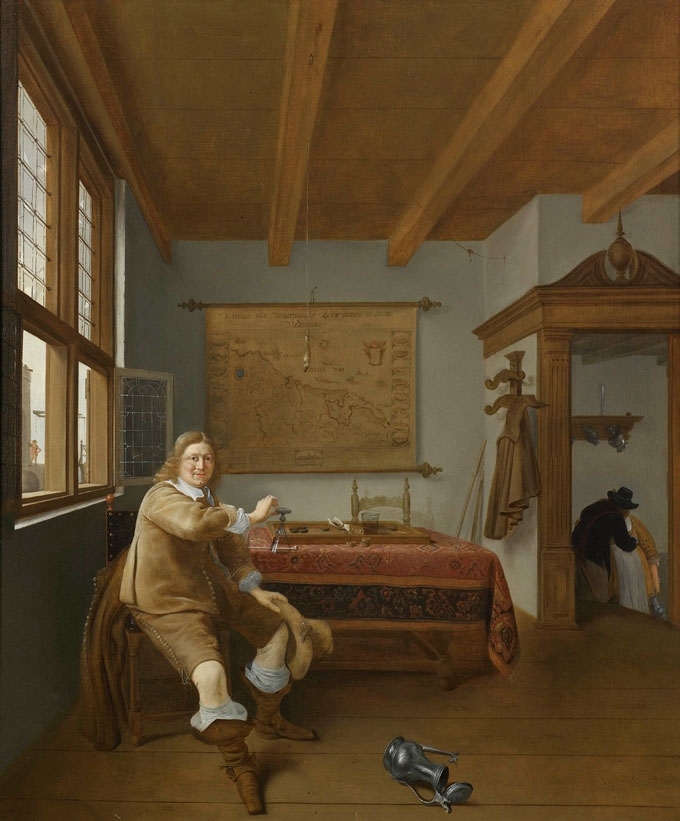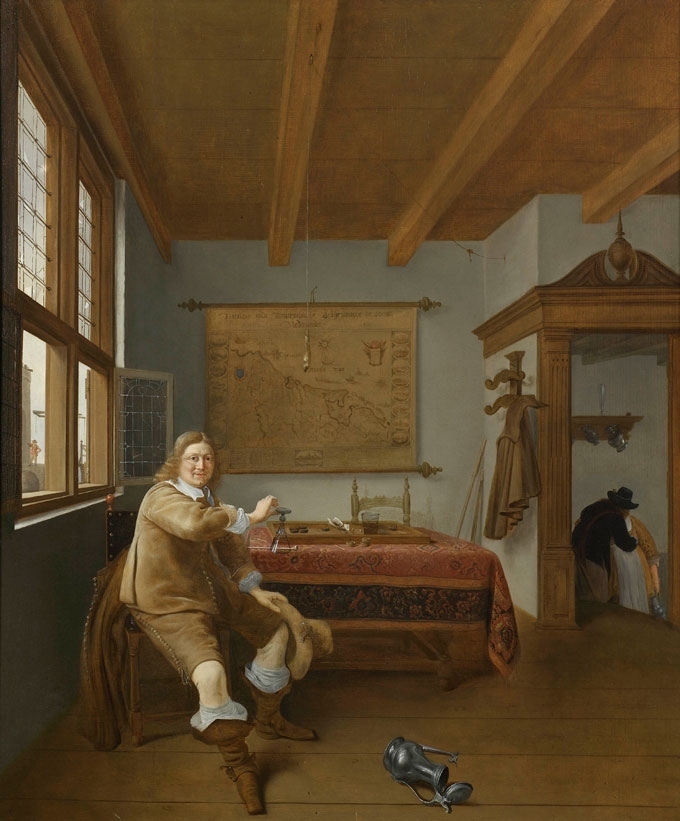The Friends Raise a Glass to “The Empty Wineglass”

At their 40th Anniversary Gala in October, the Friends of the Art Museum were asked to consider three potential acquisitions for the Museum’s collection and to vote on which would stay. After an evening of food, drink, and dancing (and some heavy lobbying from various curators), the Friends chose to purchase Issack Koedijk’s The Empty Wineglass. Following is a brief bit about the piece.
Genre scenes, commonly known as pictures of everyday life, like this interior of an inn, became popular in the decades after creation of the Dutch republic in 1609. They particularly appealed to an elite class of wealthy citizens who read moralizing messages into them.
Here a cavalier sits at a table, ruefully holding an upturned glass, while an empty pewter flagon rolls on the floor. The man has clearly been enjoying the sensual pleasures of gaming, drinking, and smoking, but now his luck is out: glass and pitcher are empty and the hostess (visible in the background) yields to the embrace of another man. There is a sense of pleasure spent and a warning against over indulgence. The date 1648 on the map above the table may be a reference to the Peace of Westphalia that put an end to the Thirty Years’ War and granted independence from Spain to the Protestant Northern Netherlands. Consequently, the cavalier’s empty glass may also allude to a collective exhaustion by the Dutch after eighty years of struggle for self-government.

